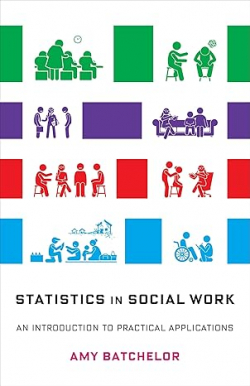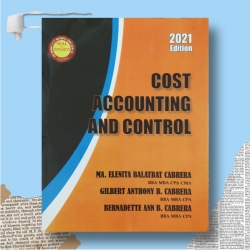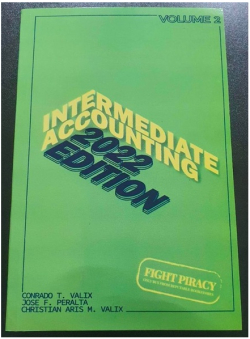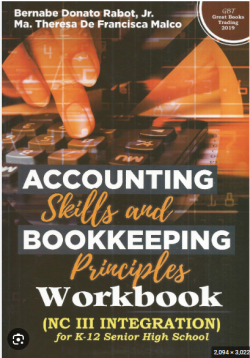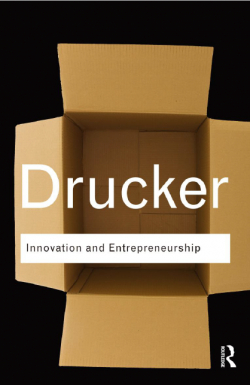Accounting: an introduction to principles and practice
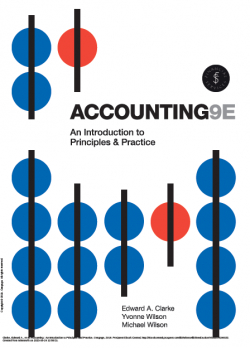
Book Stores
Type
E-Book
Category
E-resources
[ Browse Items ]
Publication Year
2019
Publisher
Cengage , United States
Pages
643 .p.
Subject
1. Accounting. 2. Corporations--Accounting. 3. Financial statement.
Abstract
When preparing for the first edition of this book from December 1989, technology and
electronics were very different from today. At the time, many businesses used manual
accounting systems. Computerised accounting systems were very basic and expensive.
In the intervening years, the business and accounting world has been ‘turned up-side
down’ with computers and electronic processes that include cloud-based accounting software
and storage facilities. Communication choices are considerable and have become inexpensive.
Electronic devices including cards and phones may be used as means of payment. Cash money
and cheques are being used less, as new technologies are developed and accepted. Technological
developments continue to change payment systems at a rapid pace.
The ninth edition of this book includes some of these ongoing major developments in
the way business is transacted.
This new edition includes the following features:
• The first chapter has been reduced in size and complexity to concentrate on the broad
concepts of recording and reporting business transactions.
• A new second chapter incorporates the second half of chapter one in the 8th edition.
It includes diagrams to demonstrate electronic forms of documentation and transfer of funds.
The importance of thorough authorisation and checking procedures to verify the accuracy and
authenticity of a transaction is also incorporated in diagrams and throughout the chapter.
• Further links are developed between manual accounting and computer accounting systems.
• The number of closing journals entries for end of year accounts has been reduced.
Students should understand the principles behind the process but not be expected to
complete excessive numbers of closing journal entries and general ledger postings.
• The emphasis on service industries has been enhanced throughout book. Service
industry questions have been expanded, but financial reporting has been limited to basic
income statements reporting to avoid undue complexity.
• Worksheets have been significantly upgraded as the need for having a ‘trading’ account
has been incorporated into the profit and loss. This has reduced the worksheet process
to an 8-column worksheet. The 6-column worksheet has been removed to place more
emphasis on learning to prepare financial reports.
• The payroll chapter has been updated in line with current minimum wage rates. The 2017–18
income tax rates are used, being the most current at the time of updating the book.
• The exposition of the principles and methods is supplemented with clear, worked
examples. This textbook is accompanied by CourseMate Express, a Cengage online
platform that includes fully worked solutions to all even-numbered questions, and a soft
copy of the workbook and additional templates in Excel format.
The ninth edition of Accounting: An Introduction to Principles and Practice supports
compliance with the VET Quality Framework and the Financial Services Training Package
(Release 3.0). It covers several core and elective units in the Accounting and Bookkeeping
qualifications and skills sets. It is designed for use by students studying at TAFE and other
tertiary education providers. It also continues to be very useful reading for university
students studying introductory accounting.
electronics were very different from today. At the time, many businesses used manual
accounting systems. Computerised accounting systems were very basic and expensive.
In the intervening years, the business and accounting world has been ‘turned up-side
down’ with computers and electronic processes that include cloud-based accounting software
and storage facilities. Communication choices are considerable and have become inexpensive.
Electronic devices including cards and phones may be used as means of payment. Cash money
and cheques are being used less, as new technologies are developed and accepted. Technological
developments continue to change payment systems at a rapid pace.
The ninth edition of this book includes some of these ongoing major developments in
the way business is transacted.
This new edition includes the following features:
• The first chapter has been reduced in size and complexity to concentrate on the broad
concepts of recording and reporting business transactions.
• A new second chapter incorporates the second half of chapter one in the 8th edition.
It includes diagrams to demonstrate electronic forms of documentation and transfer of funds.
The importance of thorough authorisation and checking procedures to verify the accuracy and
authenticity of a transaction is also incorporated in diagrams and throughout the chapter.
• Further links are developed between manual accounting and computer accounting systems.
• The number of closing journals entries for end of year accounts has been reduced.
Students should understand the principles behind the process but not be expected to
complete excessive numbers of closing journal entries and general ledger postings.
• The emphasis on service industries has been enhanced throughout book. Service
industry questions have been expanded, but financial reporting has been limited to basic
income statements reporting to avoid undue complexity.
• Worksheets have been significantly upgraded as the need for having a ‘trading’ account
has been incorporated into the profit and loss. This has reduced the worksheet process
to an 8-column worksheet. The 6-column worksheet has been removed to place more
emphasis on learning to prepare financial reports.
• The payroll chapter has been updated in line with current minimum wage rates. The 2017–18
income tax rates are used, being the most current at the time of updating the book.
• The exposition of the principles and methods is supplemented with clear, worked
examples. This textbook is accompanied by CourseMate Express, a Cengage online
platform that includes fully worked solutions to all even-numbered questions, and a soft
copy of the workbook and additional templates in Excel format.
The ninth edition of Accounting: An Introduction to Principles and Practice supports
compliance with the VET Quality Framework and the Financial Services Training Package
(Release 3.0). It covers several core and elective units in the Accounting and Bookkeeping
qualifications and skills sets. It is designed for use by students studying at TAFE and other
tertiary education providers. It also continues to be very useful reading for university
students studying introductory accounting.
Description
Guide to the text ix
Guide to the online resources xi
Preface xiii
Acknowledgements xiv
1 Accounting: its foundations 1
Introduction 1
Introduction to business operations 2
Basic accounting terms 5
Types of business ownership, their advantages and disadvantages 10
Accounting assumptions: conventions and doctrines 13
The Conceptual Framework and accounting standards 17
Ethics as it applies to accounting 21
2 Financial transactions and their documentation 26
Introduction 26
Personal transactions 27
Business transactions 28
Documentation 30
Filing of documentation 50
3 The accounting equation 55
Introduction 55
The accounting equation 56
Balance sheet (or statement of financial position) 62
The expanded accounting equation 65
Chart of accounts 70
4 Transactions, general journals and double-entry processing 79
Introduction 79
An overview of the accounting process 80
Introduction to the general journal 80
Introduction to the goods and services tax (GST) 82
Transactions entered in the general journal 84
General journals posted to the general ledger 92
Trial balance: summary of general ledger balances
5 Transactions, specialised journals and double-entry processing 111
Introduction 111
The process so far 112
Specialised journals 113
Source documents entered in journals 114
Preparation of specialised journals 121
Sales journal: sell now, be paid later 122
Purchases journal: buy now, pay later 130
Cash receipts journal 138
Cash payments journal 147
Cash receipts journal with accounts receivable 155
Cash payments journal with accounts payable 155
Transactions review 163
Discounts: result of credit transactions 170
Cash accounting 173
Organisational standards and procedures 177
6 Separate ledgers for accounts receivable and accounts payable 184
Introduction 184
What can we now do? 185
Subsidiary ledgers and control accounts 185
Relevance of the inventory system to receivables and payables 187
Accounts receivable control and subsidiary ledger 188
Accounts payable control and subsidiary ledger 196
Administration of accounts receivable and accounts payable 210
Reconciliations 220
Reconciliations: accounts receivable 220
Reconciliations: accounts payable 233
Other subsidiary ledgers and control accounts 241
7 Journals and ledgers for special transactions 258
Introduction 258
Commencement of a business 259
Buying another business 260
Introduction of additional capital 261
Drawings of funds and goods 261
Purchase of non-current assets 263
Sale of a non-current asset at book value 264
Interest receivable and payable on overdue accounts
Dishonour of a cheque 267
Bad debt write-offs 272
Bad debts recovered 275
Bills receivable accepted and met 276
Bills payable accepted and met 278
Computerised accounting and special transactions 279
8 Management controls over cash 290
Introduction 290
Principles for internal control of cash 291
Bank reconciliation 293
Petty cash imprest system 322
9 The general ledger and financial reports 333
Introduction 333
Linking the general ledger to financial reports 334
Close general ledger accounts 338
Closing general journal entries 350
Income statement: trading basic format 351
Balance sheet: basic format 357
Account allocation to financial statements 361
Preparing financial reports for a servicing business 374
10 Matching expense and revenue to the accounting period 386
Introduction 386
Balance day adjustments 387
1. Expense accrued: expense incurred not yet processed 391
2. Expense prepaid: expense processed but not yet incurred 398
3. Revenue accrued: revenue not yet received 402
4. Revenue received in advance: revenue received not earned 407
5. Accounts receivable: uncollectable 411
6. Depreciation 418
7. Variance between perpetual inventory records and physical inventory 422
8. Leave provisions: annual leave, sick and carer’s leave and long service leave 432
Prepare adjusted trial balance 438
Summary of balance day adjustments 440
Reversals 441
Standing journals 446
11 Preparing final reports from a worksheet 458
Introduction 458
Steps in preparing the 2-column worksheet: trial balance 459
8-column worksheet: format and columns 474
8-column worksheet incorporating balance day adjustments 476
From the 8-column worksheets to financial statements 483
Worksheets for simple service industry 492
12 Advanced management reports and correction of errors 499
Introduction 499
Review of end-of-period processes 500
1. Periodic and perpetual inventory: trial balance, balance day adjustments
and closing journals 501
Both periodic and perpetual inventory 508
Financial statements from an 8-column worksheet or the adjusted trial balance 511
Preparation of financial statements 515
Correction of errors 527
13 Accounting for non-current assets 552
Introduction 552
Key terms 553
Asset register 555
Depreciation expense: its nature and determination 558
Procedures for calculation of depreciation methods and recording in the accounts 560
Derecognition or disposal of depreciable assets 577
14 Payroll preparation and accounting entries 591
Introduction 591
Main payroll functions and processes 592
Employment conditions 592
Employee benefits and payroll 594
Payroll preparation 598
Accounting for payroll 605
Provisions for leave 612
Pay-as-you-go – PAYG withholding 613
Other employer obligations 621
Glossary 629
Index 634
Guide to the online resources xi
Preface xiii
Acknowledgements xiv
1 Accounting: its foundations 1
Introduction 1
Introduction to business operations 2
Basic accounting terms 5
Types of business ownership, their advantages and disadvantages 10
Accounting assumptions: conventions and doctrines 13
The Conceptual Framework and accounting standards 17
Ethics as it applies to accounting 21
2 Financial transactions and their documentation 26
Introduction 26
Personal transactions 27
Business transactions 28
Documentation 30
Filing of documentation 50
3 The accounting equation 55
Introduction 55
The accounting equation 56
Balance sheet (or statement of financial position) 62
The expanded accounting equation 65
Chart of accounts 70
4 Transactions, general journals and double-entry processing 79
Introduction 79
An overview of the accounting process 80
Introduction to the general journal 80
Introduction to the goods and services tax (GST) 82
Transactions entered in the general journal 84
General journals posted to the general ledger 92
Trial balance: summary of general ledger balances
5 Transactions, specialised journals and double-entry processing 111
Introduction 111
The process so far 112
Specialised journals 113
Source documents entered in journals 114
Preparation of specialised journals 121
Sales journal: sell now, be paid later 122
Purchases journal: buy now, pay later 130
Cash receipts journal 138
Cash payments journal 147
Cash receipts journal with accounts receivable 155
Cash payments journal with accounts payable 155
Transactions review 163
Discounts: result of credit transactions 170
Cash accounting 173
Organisational standards and procedures 177
6 Separate ledgers for accounts receivable and accounts payable 184
Introduction 184
What can we now do? 185
Subsidiary ledgers and control accounts 185
Relevance of the inventory system to receivables and payables 187
Accounts receivable control and subsidiary ledger 188
Accounts payable control and subsidiary ledger 196
Administration of accounts receivable and accounts payable 210
Reconciliations 220
Reconciliations: accounts receivable 220
Reconciliations: accounts payable 233
Other subsidiary ledgers and control accounts 241
7 Journals and ledgers for special transactions 258
Introduction 258
Commencement of a business 259
Buying another business 260
Introduction of additional capital 261
Drawings of funds and goods 261
Purchase of non-current assets 263
Sale of a non-current asset at book value 264
Interest receivable and payable on overdue accounts
Dishonour of a cheque 267
Bad debt write-offs 272
Bad debts recovered 275
Bills receivable accepted and met 276
Bills payable accepted and met 278
Computerised accounting and special transactions 279
8 Management controls over cash 290
Introduction 290
Principles for internal control of cash 291
Bank reconciliation 293
Petty cash imprest system 322
9 The general ledger and financial reports 333
Introduction 333
Linking the general ledger to financial reports 334
Close general ledger accounts 338
Closing general journal entries 350
Income statement: trading basic format 351
Balance sheet: basic format 357
Account allocation to financial statements 361
Preparing financial reports for a servicing business 374
10 Matching expense and revenue to the accounting period 386
Introduction 386
Balance day adjustments 387
1. Expense accrued: expense incurred not yet processed 391
2. Expense prepaid: expense processed but not yet incurred 398
3. Revenue accrued: revenue not yet received 402
4. Revenue received in advance: revenue received not earned 407
5. Accounts receivable: uncollectable 411
6. Depreciation 418
7. Variance between perpetual inventory records and physical inventory 422
8. Leave provisions: annual leave, sick and carer’s leave and long service leave 432
Prepare adjusted trial balance 438
Summary of balance day adjustments 440
Reversals 441
Standing journals 446
11 Preparing final reports from a worksheet 458
Introduction 458
Steps in preparing the 2-column worksheet: trial balance 459
8-column worksheet: format and columns 474
8-column worksheet incorporating balance day adjustments 476
From the 8-column worksheets to financial statements 483
Worksheets for simple service industry 492
12 Advanced management reports and correction of errors 499
Introduction 499
Review of end-of-period processes 500
1. Periodic and perpetual inventory: trial balance, balance day adjustments
and closing journals 501
Both periodic and perpetual inventory 508
Financial statements from an 8-column worksheet or the adjusted trial balance 511
Preparation of financial statements 515
Correction of errors 527
13 Accounting for non-current assets 552
Introduction 552
Key terms 553
Asset register 555
Depreciation expense: its nature and determination 558
Procedures for calculation of depreciation methods and recording in the accounts 560
Derecognition or disposal of depreciable assets 577
14 Payroll preparation and accounting entries 591
Introduction 591
Main payroll functions and processes 592
Employment conditions 592
Employee benefits and payroll 594
Payroll preparation 598
Accounting for payroll 605
Provisions for leave 612
Pay-as-you-go – PAYG withholding 613
Other employer obligations 621
Glossary 629
Index 634
Biblio Notes
Note: Includes references, index and glossary.
Number of Copies
1
| Library | Accession No | Call No | Copy No | Edition | Location | Availability |
|---|---|---|---|---|---|---|
| Main | 0 | Request access through: https://bit.ly/LibAssist | 1 | Yes |
